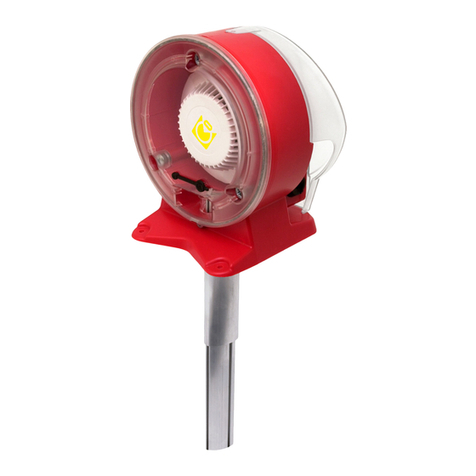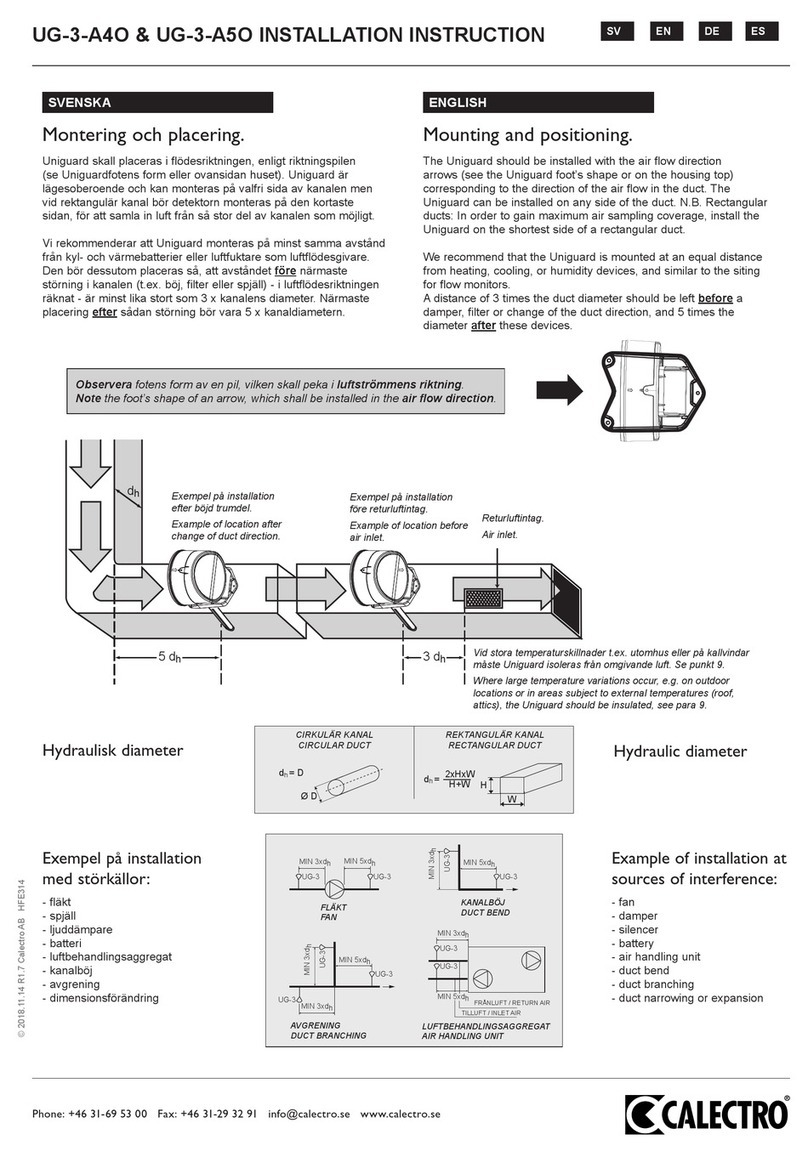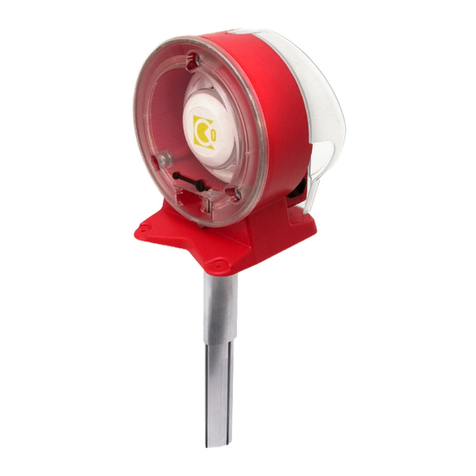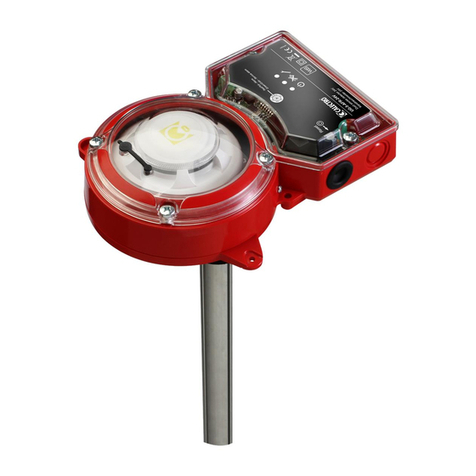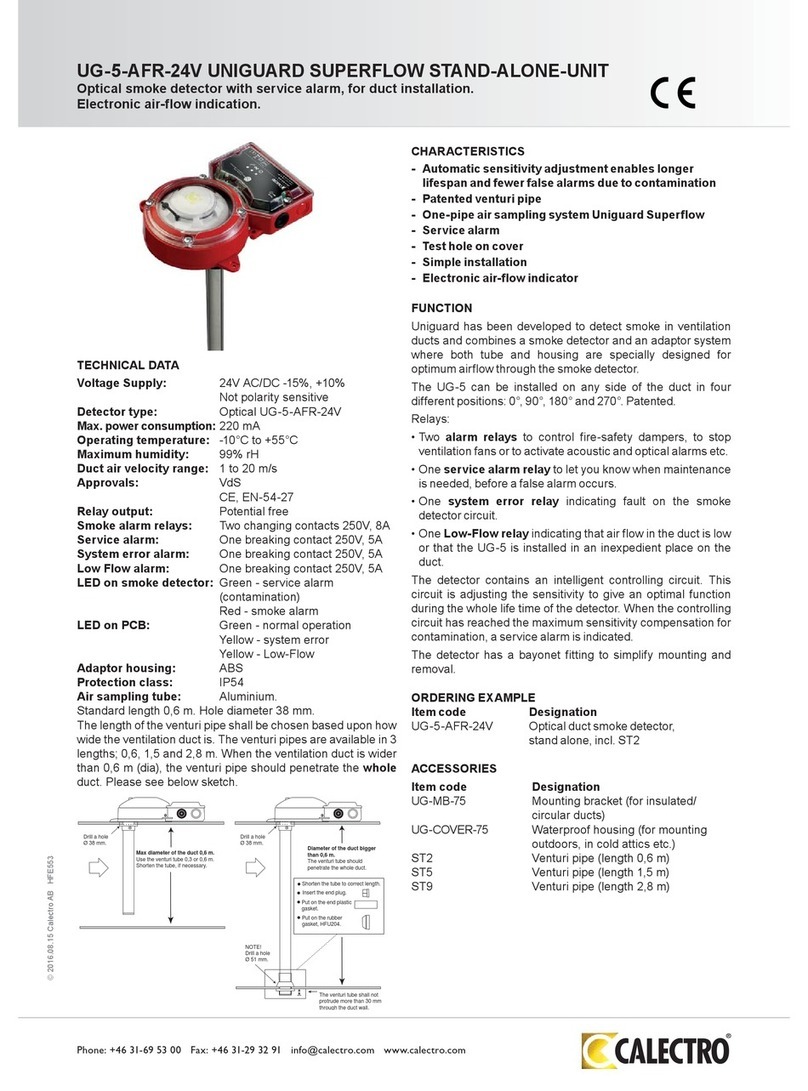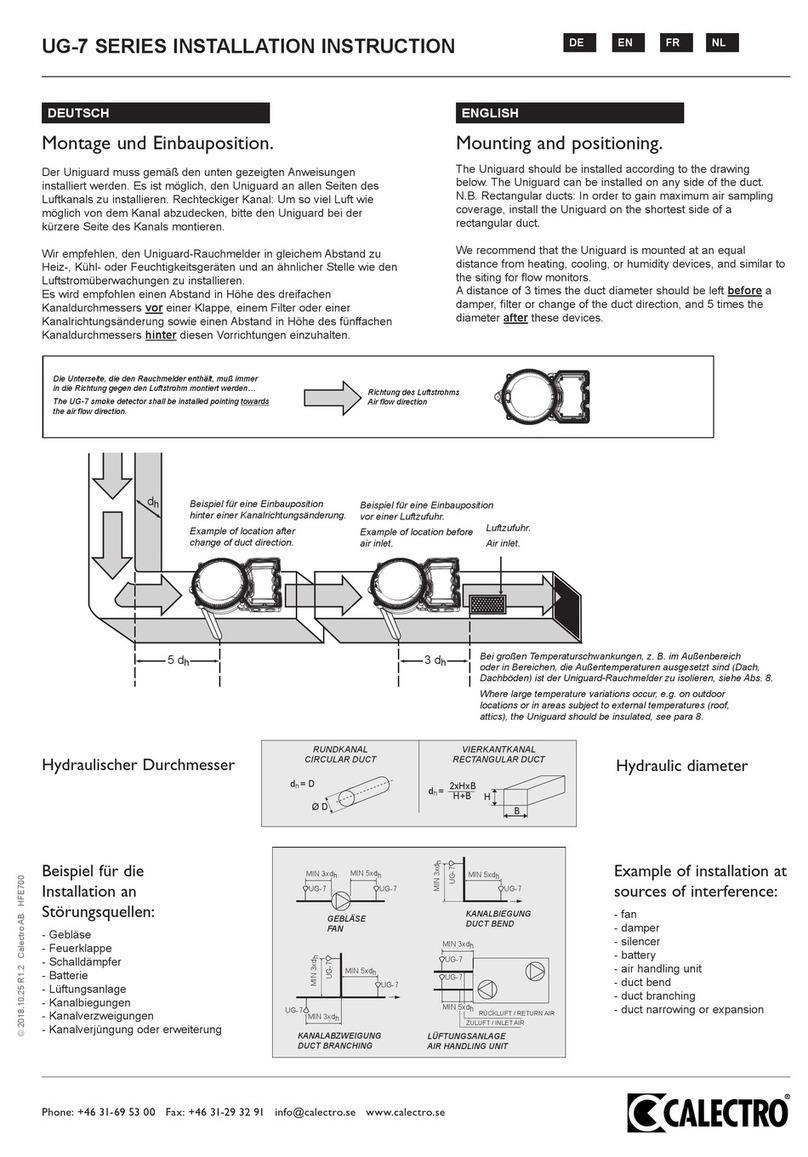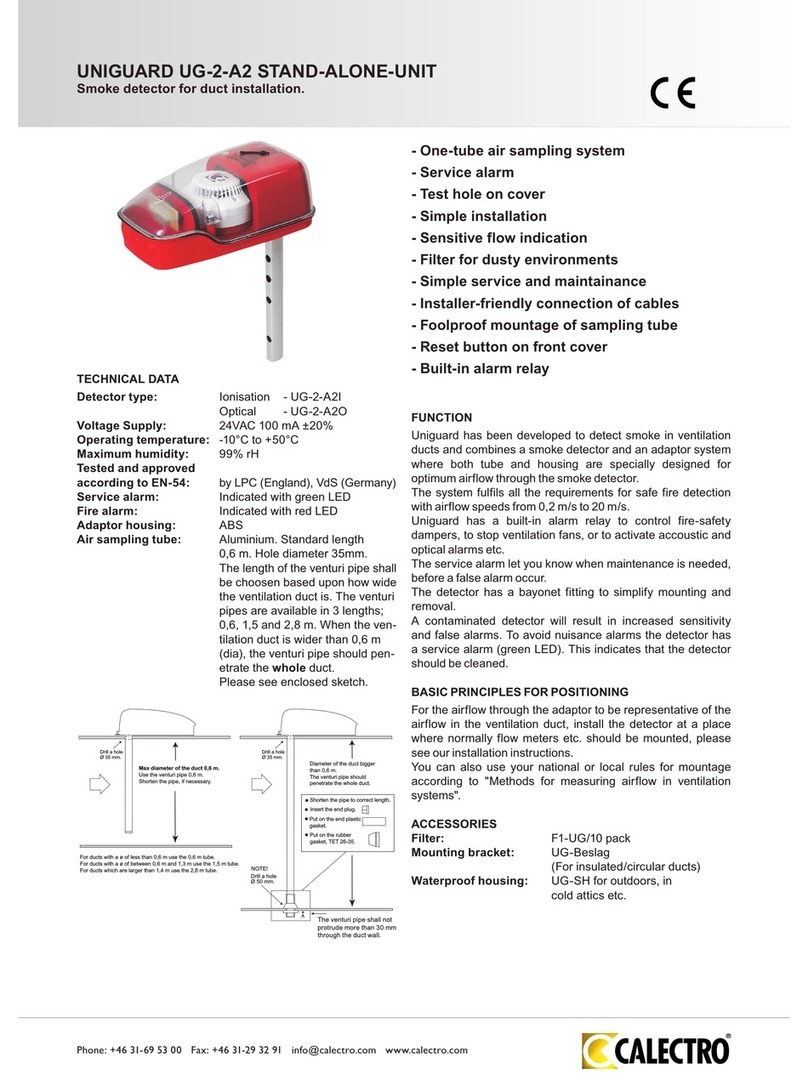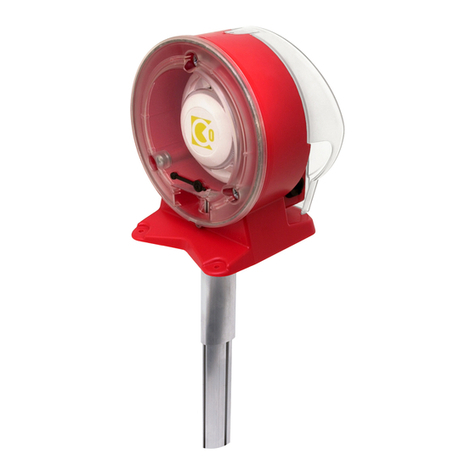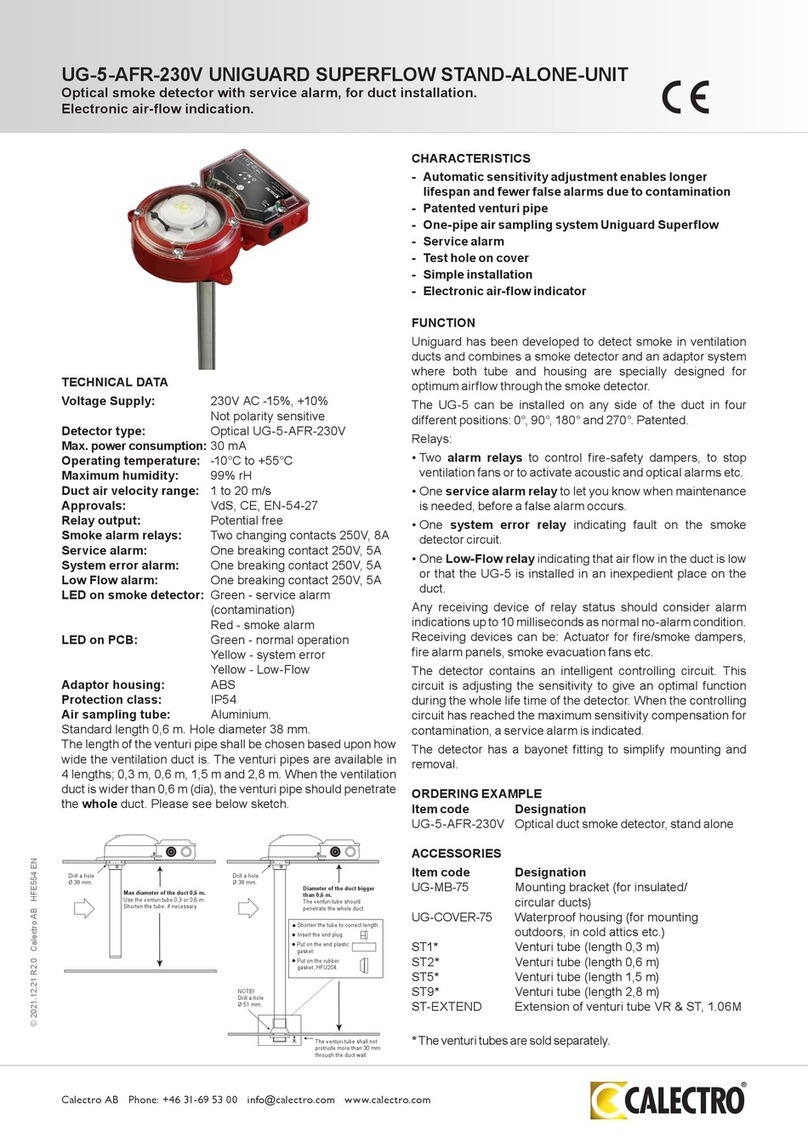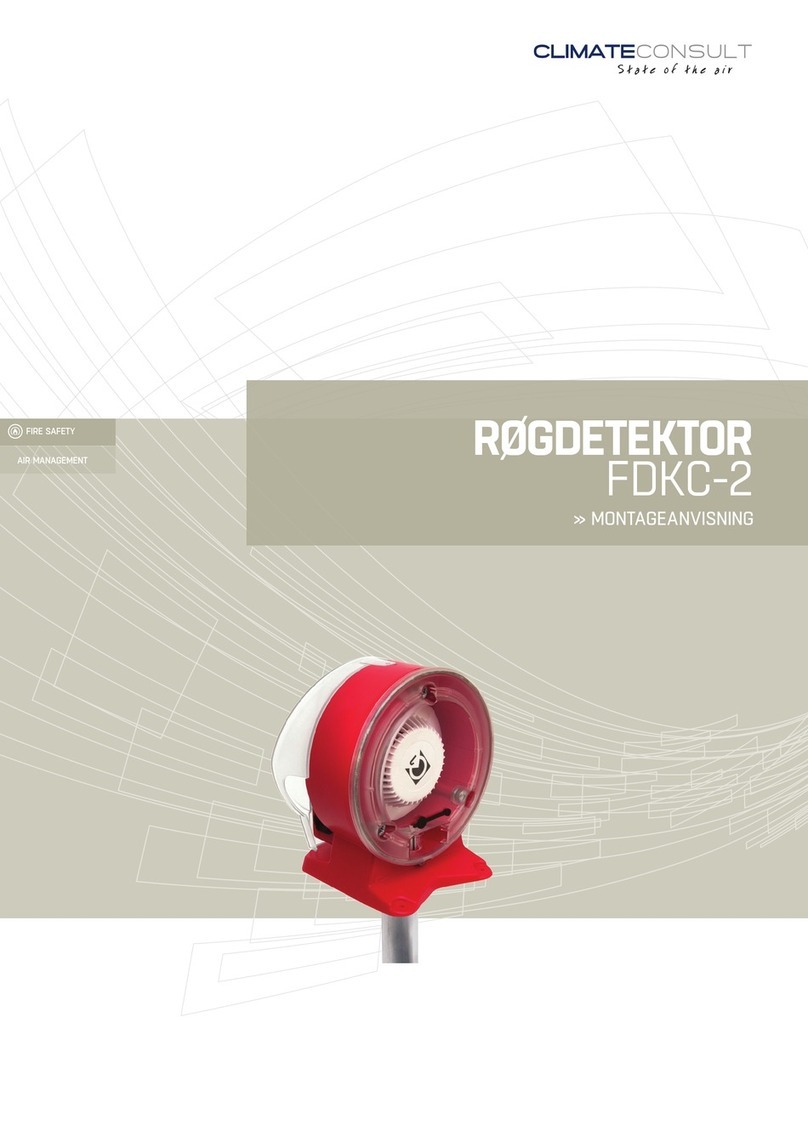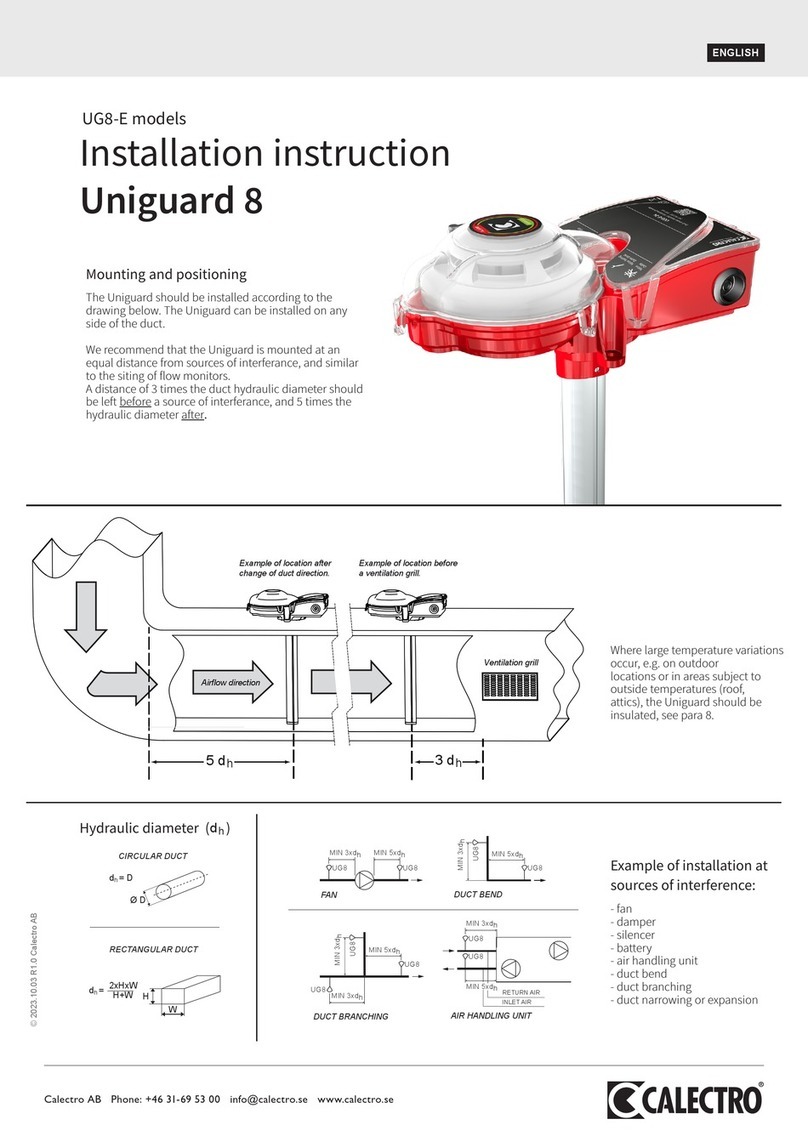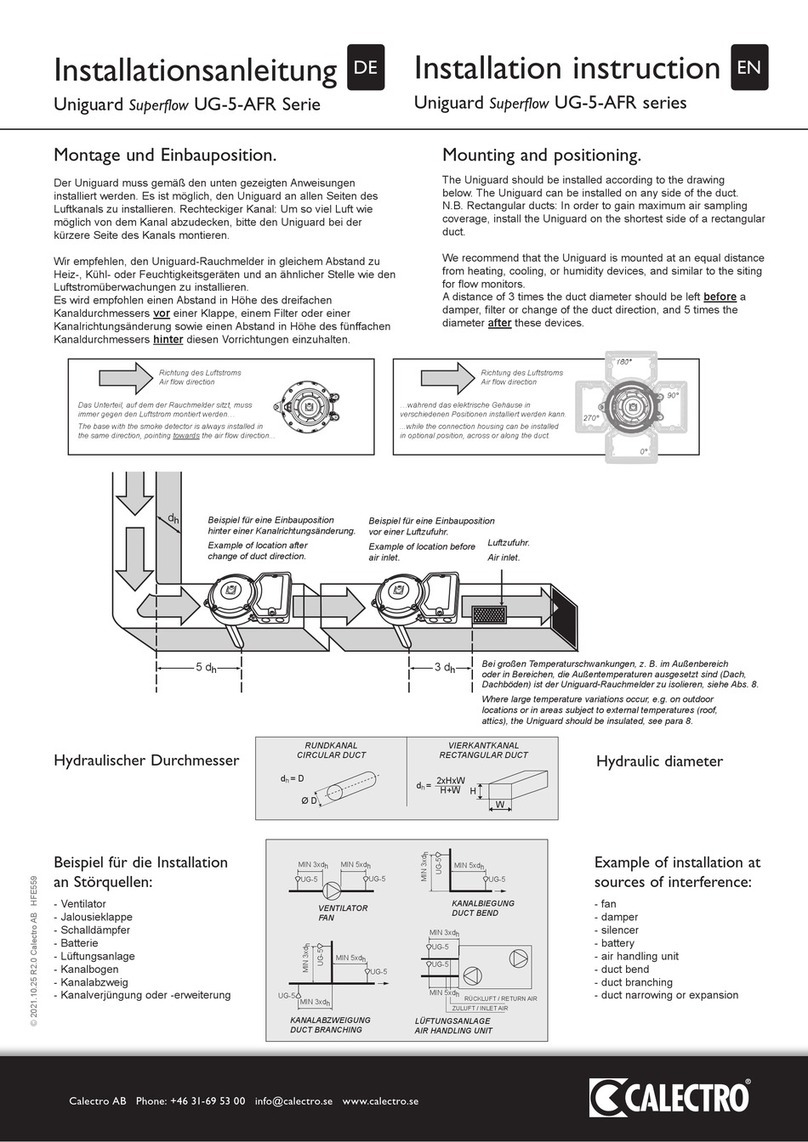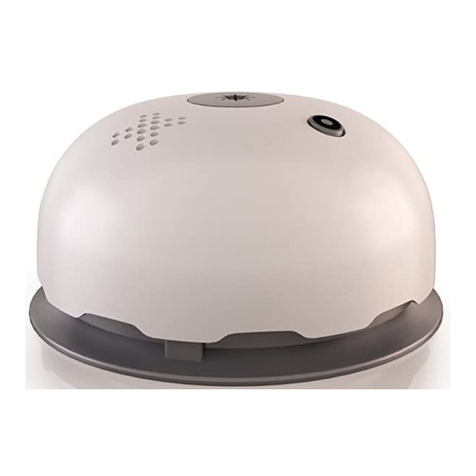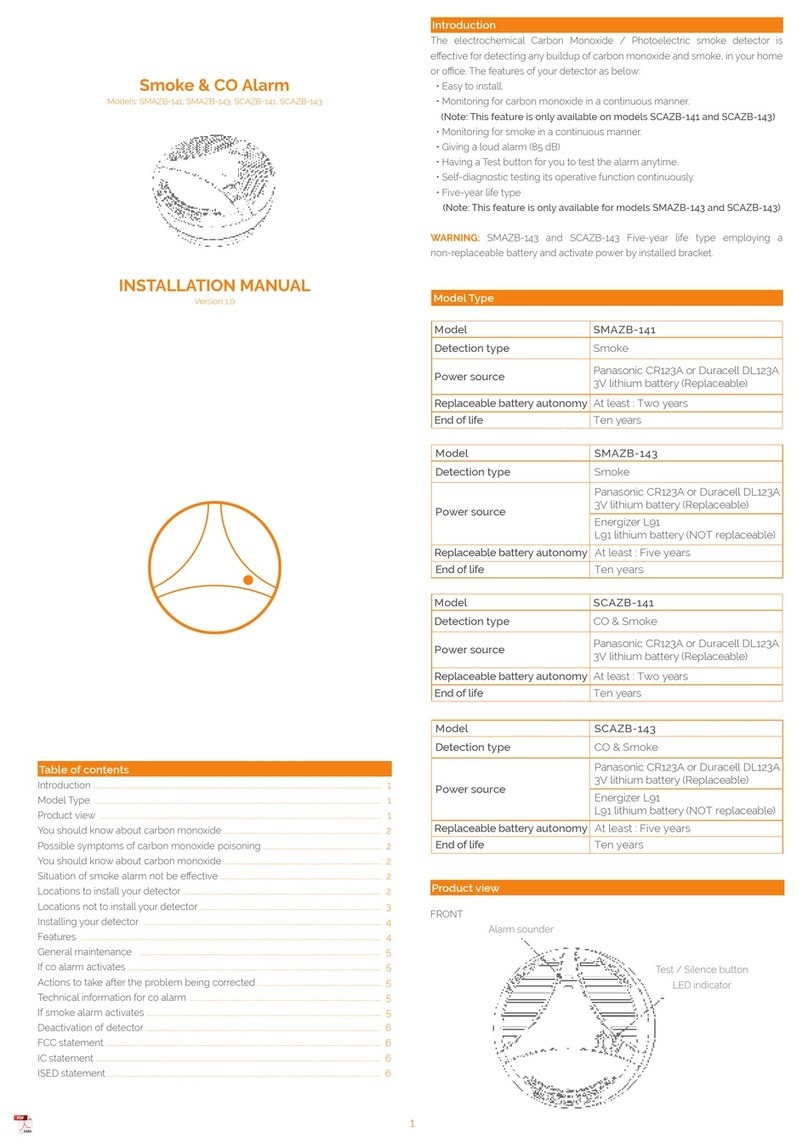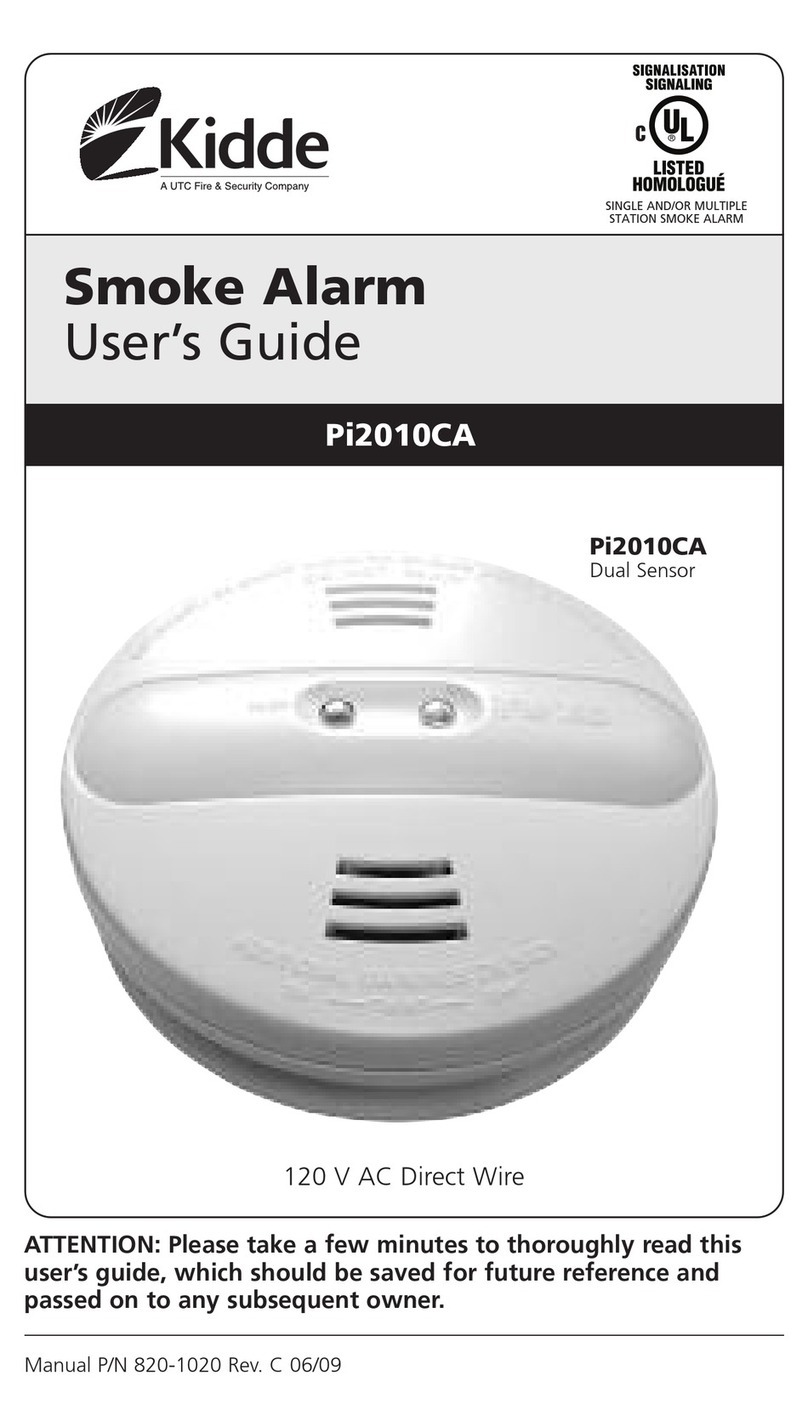UG-7-A6O Installation manual page 8
HFE716 Version: 14 Date: 2014-03-24
NOTE 4: Supervisory contacts indicates: removed, contaminated or power failure. Contacts shown in standby
position. Open contacts indicate a trouble condition. See specifications for contact ratings.
NOTE 5: Alarm Initiation contacts shown in standby position. Closed contacts indicate an alarm condition. See
specifications for contact rating.
NOTE 6: The detector link circuit must be a loop. This means that the last linked detector must be connected
with the first detector. Maximum 100 detectors in a link. Maximum cable length: 200 yards between each
detector. Disconnect the power when installing the detector linking function. Polarity must be maintained
between all linked detectors to obtain normal operation of the linking function.
[7] MEASUREMENT TESTS
[7.1] METHOD 1: AEROSOL SPRAY FOR AIR FLOW SPEED: 100-275 FPM
This test is aimed toward a system that operates between 100-275 FPM. Additional modifications will be
required for a system that operates at higher air velocities that exceeds 275 FPM. This will require drilling an
approximately ¼ inch (6.35mm) hole about 3 feet (0.914m) upstream from the duct detector. Measure the air
movement through the hole with a velocity meter while the air handler is on, the air velocity should be a
minimum of 100 FPM Introduce aerosol smoke into the duct through the ¼ inch (6.35mm) hole by following the
instruction on the smoke detector tester and wait approximately 2-3 minutes for the detector to alarm. The
detector alarm indicates that air is moving into the detector.
With the air handler on, push the Reset Button (repeatedly if necessary) until the UG-7-A6O remains in Standby
condition. This also indicates that the aerosol smoke is ventilated from the detector chamber. Once this operation
is completed, the ¼ inch (6.35mm) hole must be sealed off by applying duct tape.
NOTE: Aerosol smoke can be purchased from Home Safeguard Industries at homesafeguard.com, model HO-
25S Smoke Detector Tester. Proper use of the canned smoke agent will place the smoke detector in alarm mode.
Refer to the manufacture’s details and instructions for the proper use of the canned smoke agent.
[7.2] METHOD 2: LOW VELOCITY 100-500 FPM:
This test is intended for low-flow systems (100-500 FPM).
With the air handler on, measure the air velocity with an anemometer. The air speed must be100 FPM or
greater. Then use the Dwyer Transmitter (series 607) by following the details provided in figure 16B. The
pressure differential across the inlet port and outlet ports of the sampling tube shall be verified to be more than
0.01 inches of water. Measure the pressure difference between the inlet port and outlet ports on the sampling
tube with a Dwyer Series 607 Differential Pressure Transmitter. To verify sufficient sampling of ducted air, turn
the air handler on. Connect the leads of the meter to either side of the 1KΩ resistor. Allow unit to warm up for
15 seconds. With both HIGH and LOW pressure ports open to ambient air, measure and record the voltage drop
across the 1KΩ resistor (measurement A), typical reading is approximately 4V. Use flexible tubing to connect
the HIGH side of the transmitter to the inlet port of the sampling tube and the LOW side of the transmitter to the
outlet ports of the sampling tube. Measure and record the voltage drop across the 1KΩ resistor (measurement
B). Subtract the voltage recorded in measurement A from the voltage recorded in measurement B. The results
should be greater than 0.15 volts, and then this indicates that there is enough air flow through the duct smoke
detector for proper operation.
